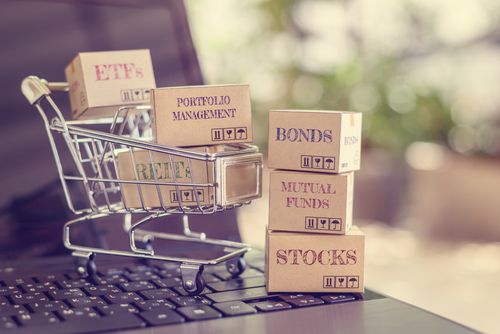This site uses cookies to provide you with a great user experience. By using BondbloX, you accept our use of cookies.
How to Use Bond Ladders to Find Stable Income Across Interest Rate Cycles
Today everyone around us seems to be a bond market expert! They seem to be always quite certain about the direction of interest rates. What if, one believed that in the long run it is hard to predict rates. The world is full of uncertainty, and we can’t know for sure what will happen to interest rates in medium to long term. What should one do then?
GFC, Taper tantrum, COVID, the spike in inflation in 2023 were events that were not predicted. We have seen overnight interest rate go from six percent to zero and back to five and a quarter percent. This creates a reinvestment risk if you have a lot of maturities at the time rates are low. Similarly, we have seen massive movements in the US 10 year yield over the last 10 years. From a low of 0.53% to a high 4.91%. It can be embarrassing to the experts if one were to ask them about the historical performance of their views.
If an individual investor had a USD 5 million bond portfolio at 5%, she would make a quarter million dollars per annum. But if yields were to fall to 2 percent, her income would fall to just one hundred thousand dollars. A large drop in income can be hard to digest. How does one insulate oneself from this extreme volatility? One way is to be a great forecaster! The other way is to build a bond ladder. If you know a good forecaster listen to her, else read on.
What is a Bond Ladder?
A bond ladder is essentially a portfolio invested in bonds with equally spaced maturities. For instance, let’s say you have USD 1 million. With corporate bonds typically having a USD 200,000 denomination, you can construct a 5-year laddered portfolio consisting of 5 bonds. Each bond has a different maturity ranging from 1 year, 2 years… to 5 years. Each of the bonds’ maturity dates represent a rung on your bond ladder, giving you a portfolio with bonds maturing every year within the 5-year time horizon. If you have access to the BondbloX online bond platform, you could do USD 100,000 each of fractional bonds, with a bond maturing every year for the next ten years too!
As you receive the principal redemption proceeds of the maturing bond every year, this is rolled over into new bonds at the end of your bond ladder. This keeps the laddered portfolio intact.
In the illustration, at the end of the first year, you will receive USD 200,000 which will be invested into a new 5-year bond so that the overall portfolio continues to have a 5-year horizon. The same process gets carried forward in every subsequent year.

Bond Ladders are generally defined in terms of the starting year and ending year, for example, the above strategy is called a ‘1-5 years ladder’. Pimco, one of the giants in the investing world offers the following ladders: 1–5, 1–11, 3–8 and 3–11 years[1].
Why Bond Ladders?
Bond Ladders are a method for people to have predictable cash follow, without having to buy ultra long-term bonds. Some of the features of Bond Ladders include:
1. Consistent and Predictable Stream of Income
Bond Ladders allow us to create a stream of steady and consistent income from our bond portfolio’s coupon payments and principal redemptions. From the earlier illustration, your laddered portfolio can return you 10 coupon payments annually (assuming coupons are paid out semi-annually). This is in addition to one principal redemption every year.
Laddered portfolios also provide cashflow predictability. Since all future coupon and redemption payments follow a predetermined schedule, we can know with certainty how much money we expect to receive since the formation of the portfolio (or the time of reinvestment). Thus, we can accurately time our spending/consumption based on our incoming cash flows.
2. Weathering Interest Rate Risk
Ladders are a neutral investment strategy, appropriate for any economic situation. If rates rise, you will anyway have some bonds maturing which, you can reinvest at higher rates. Fidelity[2], one of the worlds largest asset managers notes that ladders can also offer some protection from bond prices falling due to higher rates, as bondholders are paid the full principal of the bond when it matures. Hence they note that investors “should have the temperament” to hold the bonds in the ladder “until they mature to maximize the benefits of regular income and risk management”. Conversely, if rates fall, you will only have some bonds reinvested at lower rates. You will not be affected much because you will already have existing bonds that do not mature in the near-term, with previous higher yields locked in. Since cyclicality of economic cycles and interest rates is the underlying assumption in this strategy, the duration of your ladder should be longer than the economic cycle.
3. Less Effort, Satisfying Reward
Bond laddering resembles the ‘buy-and-hold’ passive strategy that provides the elusive “smooth income” and “peace of mind”. While it is not entirely passive in its approach, investors only need to take action as a bond is maturing, since they have to reinvest the redemption proceeds into another bond at the end of the ladder. However, investors can also choose to sell and replace a bond if the forward-looking credit profile of the issuer is no longer positive. Ladders don’t help if the bonds default, so try to avoid defaults or notable credit events. Continue to monitor your portfolio daily via online bond platforms that give you the daily portfolio value.
4. Lower Bond Trading Fees
Bond trading via a conventional method can have fees from 25bps to 150bps per trade. An active trading strategy can really rack up fees. A ladder in contrast has a fraction of the fees – one percent saved in trading translates to a one percent additional return on the portfolio. Even if one trades via efficient online bond trading platforms, the passivity of the Bond Ladder does improve the net return.
5. Benefit from Higher Average Yields
Since laddering involves consistently reinvesting in the longer end of the curve, investors can enjoy higher average yields from longer-term bonds’ term premium, during a normal upward sloping curve. This benefit gets eroded during the not so normal periods of inverted yield curves. The corporate credit curve is upward sloping benefiting the net returns achieved.
Limitations of Bond Ladders
Active strategies by skilled investors can yield much higher returns wherein investors extend duration when yields are likely to fall and shorten duration or move into higher cash positions when they think yields will rise. The ladder’s primary goal is not to maximize returns unlike active strategies. It is a relatively conservative strategy with an emphasis on smooth income and almost passively managed.
Secondly, to build a diversified laddered portfolio, the initial investment required may be high. For instance, Asian corporate dollar bonds have a minimum investment size of USD 200,000. Therefore, from our earlier illustration, building a 5-bond laddered portfolio requires a sizeable USD 1 million. To achieve a more diversified 20-bond laddered portfolio, an investor would then need about USD 4 million.
While the barriers tend to be high, for bonds with smaller minimum denominations, this is not a constraint. With the rise of fractionalisation of bonds, investors do not require a large initial outlay to construct bond ladders. with the ability to compose their very own customized portfolio.
BondbloX fractionalizes bonds so that they can be traded at minimum denominations of USD 1,000. Therefore, it is possible to achieve a diversified 20-bond laddered portfolio with as little as USD 20,000. Most bonds in the United States are traded with a minimum trading size of USD 1,000 and these can be used to construct bond ladders.
Bond Laddering – Considerations
Here are some considerations to think about while constructing bond ladders. There is no standard universal method since everyone has a different risk appetite and funding needs.
Considerations for your Ladder:
- How many rungs should your bond ladder have?
- What is the time horizon?
- How should the rungs of your bond ladder be spaced? The spacing between the rungs should be roughly equal. For instance, this could be a 1 year or 2 year spacing depending on the individual.
Considerations for your Portfolio:
- Be comfortable with the risk level that you are taking. For lesser credit risk, high grade bonds would be preferable. For non-experts they should seek the advice of the bond advisors
- Diversify your portfolio and avoid being overweight or underweight in one particular sector, credit or sovereign. This will lower the average risk of your portfolio.
- Callable bonds can be a risk factor – some of these include AT1 bonds issued by banks or high-yield bonds like the popular 5NC3 (5 year bond callable after 3 years) It is preferable to limit exposure to such bonds as they cause unpredictability of the ladder
BulletShares vs. Bond Ladders
BulletShares, are exchange-traded funds (ETFs) with fixed maturities.. BulletShares have ETFs within them with termination dates like individual bonds. These ETFs typically pay monthly distributions and as each fund terminates, the net asset value (NAV) of the fund’s assets is distributed to investors. Since they are ETFs, they offer investors access to real-time pricing and intraday trading.
In comparison, bond ladders use individual bonds instead of ETFs. Investors in traditional ladders can specifically choose bonds in the portfolio that they are comfortable with. BulletShares, buy ETFs, which buy bonds – thus, fees and commissions may apply at each layer and for each buy/sell transaction. For many investors bullet shares are a great way to create their first ladder. The taxation of the BulletShares may differ with that for bonds.
Conclusion – Fractional Bonds Help!
Bond laddering is a smart and simple strategy for investors seeking stable income and reduced risk exposure. Spreading investments across bonds with different maturity dates, can help manage interest rate risk, maintain diversification without compromising on returns. It can also be tailored to your individual financial objectives. With the advent of fractional bonds, bond ladders can be constructed with much a much smaller investment corpus.
Want to create your first bond ladder? Write to us at bbxsales@bondblox.com
References
[1] https://www.pimco.com/us/en/investments/managed-accounts/corporate-bond-ladder-managed-account
[2] https://www.fidelity.com/viewpoints/investing-ideas/bond-ladder-strategy
Previous
Perpetual Bonds – Key Risks to Know Before Investi...
Get the latest news on bonds
Receive curated global bond market news directly in your inbox everyday to stay updated








